I met my friend and pen-pal, Anja Zimmermann online! We have never met in person or even spoken, but we have become friends by writing to each-other. Anja is an educator and researcher in Arts Therapy training in the Netherlands.
Now that Australia has Bachelor of Arts Therapy training and graduates, I was curious to learn more from Anja about the Bachelor level Arts Therapy training in the Netherlands – the only other country with a career pathway including Bachelor level training for Arts Therapists!
Anja, can you tell us a bit about the history of art therapy education in the Netherlands?
The time in which the training programs started in the Netherlands was the time of healing after WWII. People wanted to be freed from external power and from internal limitations. It was the time of flower power, feminism, emancipation and empowerment.
Well, let me start with art therapy in the Netherlands in general.
The official name for the last five years has been “vaktherapie”- ‘differentiation art therapy’. We are part of “vaktherapie” as music therapy is, and drama therapy, psychomotor therapy, movement therapy, dance therapy, play therapy and ‘kunstzinnige therapie’ (inspired by Rudolf Steiner). Garden therapy also existed until the 1990s.
The name “vaktherapie” has been created as an umbrella to unite us in the developments in Dutch health care, that threatened our existence after the 1990s.
“Vaktherapie” in the Netherlands is a bachelor’s degree program at four universities of applied sciences, which means that you learn a profession, not a scientific discipline. The bachelor programs last four years and at some universities you complete the program with a bachelor of arts (BA) and others with a bachelor of science (BS).
And there are four master’s programs in the Netherlands (a dance therapy master, a music therapy master, a psychomotor therapy master and a master of all disciplines).
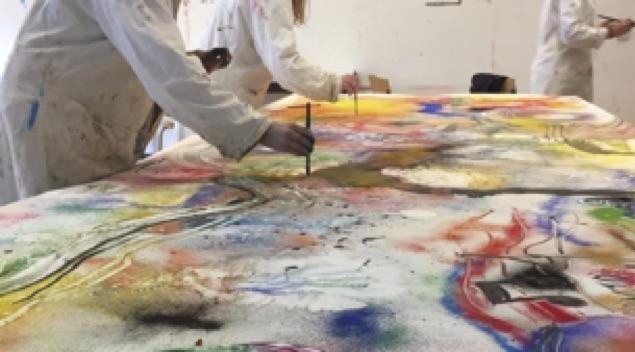
I work at HAN University of applied science in Nijmegen which has the largest training for “vaktherapie”. Every year about 160 students start at the “vaktherapie” program, 50 of whom are art therapy students. The master “vaktherapie” is situated at our university and since last year we got a research department ‘ “Vaktherapie” for people living with personality disorders’. Until now there are only five Dutch art therapists holding a PhD in art therapy.
The roots of our program go back to 1965, when the first ‘creative therapist’ training was started in the Netherlands. The predecessor of the program at HAN University (‘Kopse Hof’) started in 1980 the program ‘creatieve therapie- beeldend vormen’ (art therapy) in Nijmegen.
In our art therapy team we are around 12 lecturers. Most of us teach for two or three days a week and work as art therapists for two or three days in a health care setting or have their own art therapy studio.
Where do you teach, what is the philosophical approach of the course there, and what kinds of jobs do your students go into?
“Today I think I see a revival of humanistic principles in art therapy”.
Let us dive into history again.
The time in which the training programs started in the Netherlands was the time of healing after WWII. People wanted to be freed from external power and from internal limitations. It was the time of flower power, feminism, emancipation and empowerment. And, of artists like Joseph Beuys who statet that ‘every person is an artist and together we construct society’. Art was seen as a medium to make us free people
Philosophical it was the time of humanistic psychology approaches with terms as ‘self-actualization’, ‘authenticity’, ‘uniqueness’, being or becoming ‘yourself’ and of focus on personal development. I was educated to ‘express my authentic self’ as healing component.
Other training programs in the Netherlands added developmental models related to psychoanalysis to fulfill the deepest needs of patients in order to be able to move forward in life. Terms were for example ‘fulfillment of aesthetic needs’ and ‘integration of ego’.
In the 1980s we worked ‘eclectic’ and ‘intuitive’ and combined approaches which we learned from psychology, especially behavioral psychology. The artistic medium became an open space to investigate behavioral patterns and dynamics in groups and practice new, better, more healthy ones. Other ideas were integrated too like gestalt therapy, performance art, and symbolism inspired by Jung.
Until 1990s, art therapy was mainly offered in asylums to patients as part of the entire treatment. Then the financing changed and health insurers became increasingly important in determining the supply of patients. Therapies were linked to the Diagnostic and Statistical Manual of Mental Disorders (DSM), asking for evidence that we contributed to the improvement of these disorders. SMART goals became important and thus (cognitive) behavioral therapy approaches. Art therapists got inspired by the second, third and fourth generation of (cognitive) behavioral therapies such as acceptance commitment therapy, dialectical behavioral therapy, schema therapy, and complementary to them the mentalization based treatment. Art therapy to stimulate the development of children or people living with intellectual disability continued to develop. An example is ‘Emerging Body Language’, a method that is used by many practitioners in the Netherlands to foster social- emotional growth and wellbeing.
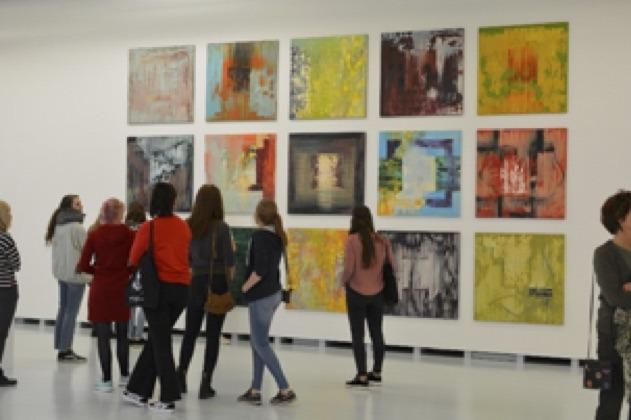
Today I think I see a revival of humanistic principles in art therapy. Well-being and health are sometimes very difficult to describe SMART and to be influenced through change of behavior patterns. At least in our training program there is more space for not externally measurable approaches in art therapy, and new methods in art therapy like narrative therapy approaches and sensory motor methods.
The art therapy methods that we teach today are a selection of methods that are used in the working field. For example methods that are inspired by schema therapy or cognitive behavioral therapy. And we teach new upcoming approaches like sensory motor approaches.
And, I should not forget to tell you that the basic model that we use to teach our students to become an art therapist is the expressive therapies continuum (ETC) as developed by Lusebrink and Cagin and later by Hinz. The ETC guides students throughout their study. It is the first model that they learn and we use it when we give feedback on their artwork.
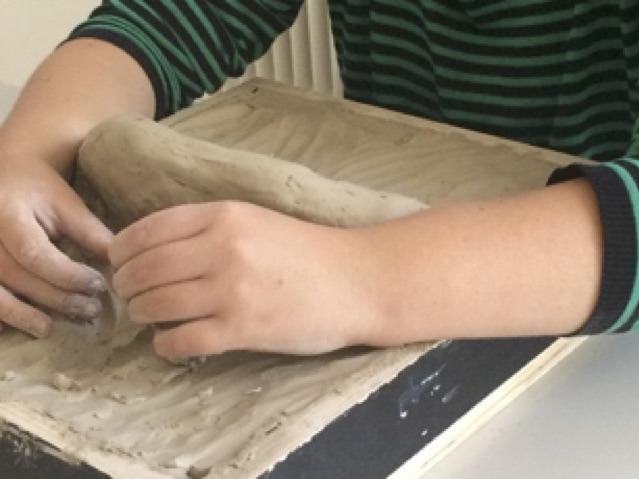
Our curriculum is build up as followed: central in the first year is to learn to reflect on yourself and others stories by the use of art (narrative approach). Students start with the first elementary internship in the second semester. In the second year the client is the centre of the attention in the curriculum. Students learn about trauma and PTSD, developmental issues, treatment of personality disorders and prevention for health and vitality. They have their second internship for nine months. In the third year students work the whole year in an art therapy internship supported by case study research module, supervision and coaching in the art studio at the university. In their last year students deepen their knowledge and experience by studying for one semester a module of choice at any university and in the last semester they work on their bachelor thesis and the development of all the final qualifications we think they should have.
Our alumni work mostly in mental health organizations and in child support organizations. Some work in schools, institutions for people suffering from dementia or for people living with (intellectual) disabilities, and some start their own art therapy studio.
Why do you think art therapy is so popular in the Netherlands?
“Creativity and art are ‘hot’”.
Since the changes in the care system in the Netherlands in the 1990s until 2018 it was difficult to find a job as an art therapist. And even in the years before most art therapists were unemployed. But in 2018, after the health care reform that should keep the costs down, we got very popular. There are many jobs for art therapists at the moment.
I think that there are two reasons for that. First is art therapy a cheap treatment in institutions. We earn less than psychologists do and we can work with groups of patients easily. As a friend who is a manager in a health care institution told me: “everybody knows that intern patients cannot just sit there and smoke all day. You have to offer something to them. And then you need therapists that know a lot about the needs of the patients but are cheap too”.
Second I think that the popularity is a counter movement to the views that life is a countability, that you can foster with SMART goals and that your cognition can change your feelings and behavior. I think that I see this change in a lot of professional domains. Creativity and art are ‘hot’.
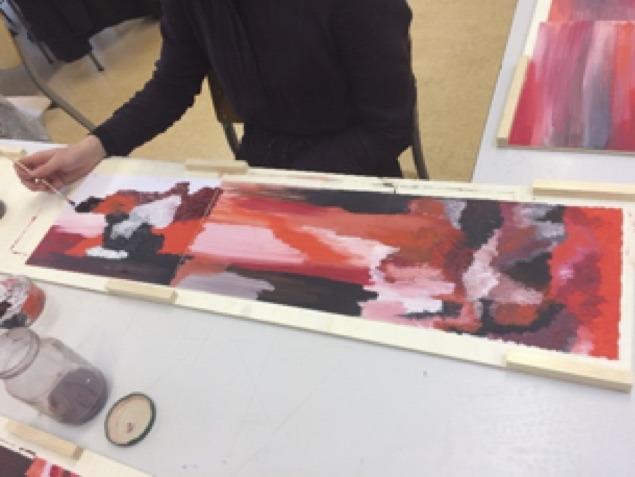
As far as I know, the Netherlands and Australia are the only countries where Bachelor Degrees in arts therapy are offered. Can you tell us about the differences between the Bachelor and Master’s level qualifications, and also the kinds of jobs graduates go into from each of the two levels?
“Bachelor study leads to a start qualification to work as an art therapist”.
The main difference is that the bachelor study leads to a start qualification to work as an art therapist. There are some modules that include research skills like the case study, a quantitative evaluation of treatment and a developmental research project. The reason to teach research skills is to help student to develop an analytic and critical reflective professional attitude and to be able to use scientific evidence in their practice.
A master study teaches more research skills to help students to set up and carry out art therapy research in their practice. The aim is to foster evidence based knowledge.
What is your own personal vision for the future of art therapy? How do you imagine we can continue to evolve as a profession?
“We can begin again and again because art is fundamental to human condition”.
I think that we should deeply trust ourselves and our profession. For me, making art is a healing activity at its core. I’m very inspired by Shaun McNiff for example. he said ‘just trust the process’.
Perhaps in the Netherlands we have drifted too far from this core by following all the different ideas in psychology over the years. We were like a camelion. On the other hand, you can argue that it is precisely that, which has helped us to live through changes and financial crises in healthcare. The ability to adapt easy to whatever is coming by is a pitfall and a strength too.
I see in areas that have been devastated that it is art that comes up first to heal space. This struck me particularly when I visited post-war Berlin before the fall of the wall. It was the art that defined the street scene, often by graphity. And, now look at the covid-19 crisis, online and offline there are art initiatives everywhere that help people to survive in these uncertain times. In human and systemic crises it is art that offers hope, that comforts, encourages, strengthens and tells of the human that overcomes.
Does that need evidence based approaches? Maybe, yes, because we function in a context to which we have to adapt (?). But in my heart and mind I know that art can foster wellbeing, health and vitality.
Let me finish by one of the most inspiring women of the 20th century: Hannah Arendt (1906-1975), and her concept of ‘natality’. Natality or ‘birth’ is a condition of possibilities to unfold your life innovatively, also in the creative sense of the authentic “beginning”. Arendt said that whatever happens to you, you have to through your threads into life and society again and again, knowing that you are taking risks by doing that. Art can be a vehicle for these threads. That is why I trust art therapy.
And, that can be a helpful image for the future of art therapy. We can begin again and again because art is fundamental to human condition.
One last question, do you want to say anything about your own research? And, do you have any other publications I can point readers to?
“Fostering Social Justice for People living with Intellectual Disabilities in Art-Based Community Spaces”.
Well, I do not have publications about art therapy in English yet. I did my master of arts therapies from 2012 to 2014. My professional life was changing at that moment. I had quit my job at a care organization for people living with intellectual disabilities after 18 years, it was time to close down my art therapy studio after 15 years and I started a new job as a team leader at HAN University. I was very tired emotionally by that time of all the work with patients suffering from severe problems. So I did my master thesis on the changes in the care system in the Netherlands and what they could mean to our art therapy training program. This did not make me very happy then.
I started another master study in 2016 at the University of Humanistic Studies. I studied meaning (making) in life, (religious) worldviews, social justice for marginalized people, and narrative research approaches. I learned to love doing research
This gave me the opportunity to also work part time as a researcher at the HAN research department ‘ethics of connecting with people with intellectual disabilities’. The research department is very happy with my experience and knowledge about art-based approaches and we include them in our research projects.
Well, and from one came the other. I will start a PhD study in august about ‘Fostering Social Justice for People living with Intellectual Disabilities in Art-Based Community Spaces’.
My first article in English will be published soon, I hope. It is called “Reinventing what counts as ethical in collaborative research. A qualitative research about partnerships between researchers with and without intellectual disabilities”.
Maybe art therapists who read this interview have tips for my PhD research. I would like it if they contact me.
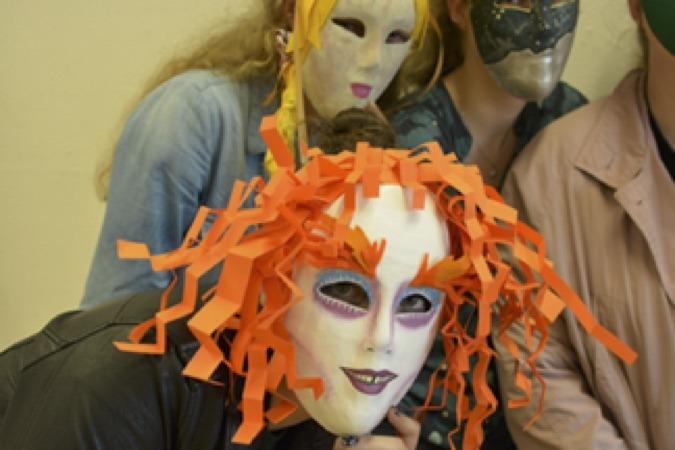
Thank you Anja for giving us this wonderful overview of Art Therapy education and practice in the Netherlands!

Leave a Reply